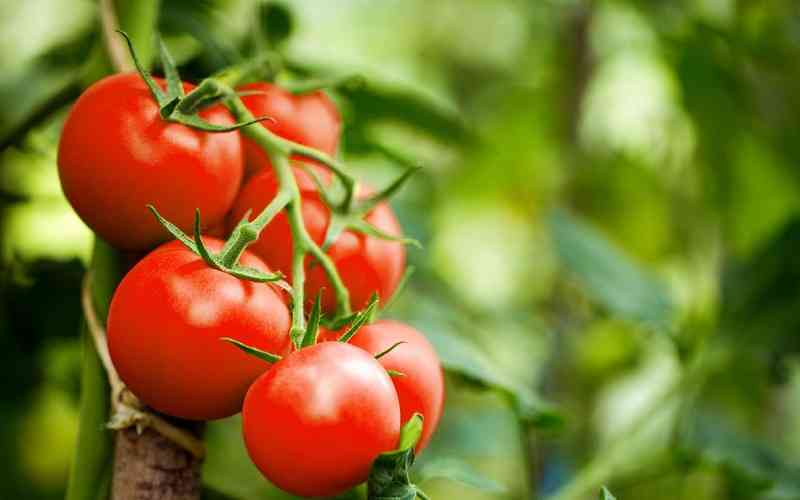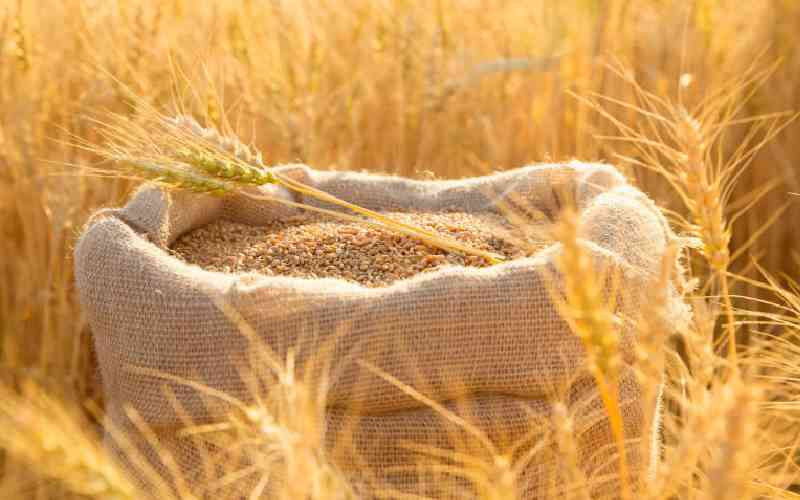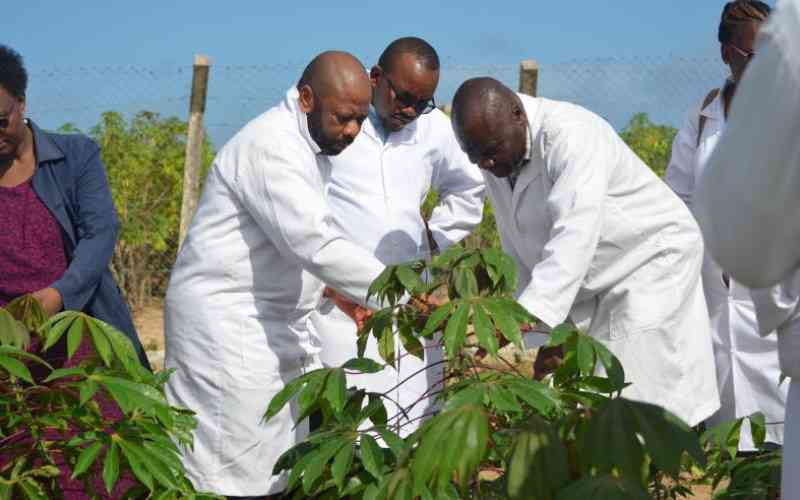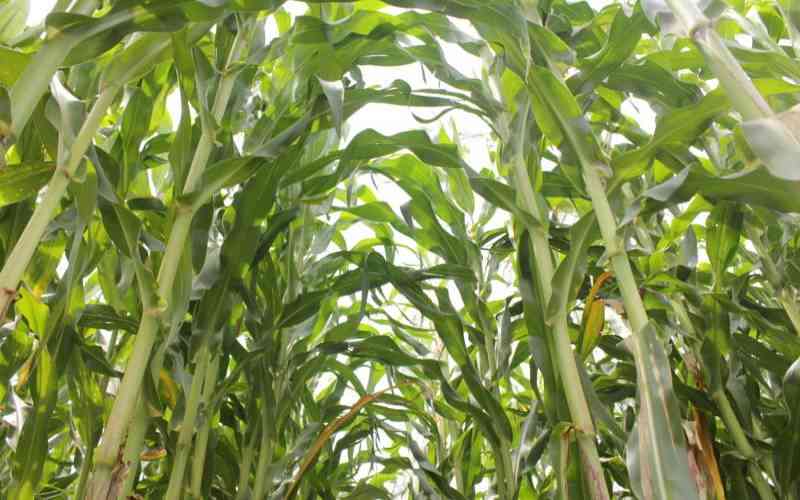
On October 4, 2022, President William Ruto lifted a 10-year ban on Genetically Modified (GM) crops officially allowing the importation of the same into the country. As expected, the move has caused mixed reactions from several quarters. Opponents of GM foods have stated that President Ruto acted too fast and should have first constituted a task force to undertake public participation and awareness creation before implementation.
Some have even alluded that the executive is being pushed by selfish interests that seek to give a monopoly to international seed producers who will now have full control of the seed system at the behest of farmers.
But politics and rumours aside, why exactly did the State decide to go the biotechnology way to fix the food security way?
Why the urgency?
Why could they not have explored measures like investing in irrigation and other solutions?
Well, the numbers are very clear that Kenya was staring at a precarious food situation and the Government had to swing into action.
While making an in-depth presentation during the Open Forum on Agricultural Biotechnology Media awards in Nairobi, Eastern Africa Grain Council executive director Gerald Makau Masila presented the data in a crystal clear manner justifying why scientists had to go the biotechnology way.
Eastern Africa Grain Council is a regional private sector membership Not-for-Profit organisation founded in 2006 representing those involved in the grain trade in Eastern Africa.

A comparative analysis between production by a Kenyan farmer and their US counterpart shows that Kenyan farmers are scratching below the surface in terms of achieving their full potential.
Massive drought
Kenya and the Horn of Africa are facing their worst drought in more than four decades. The Government made the move in the backdrop of a biting drought in Kenya that has never been seen in 40 years that had left more than 4.3 million Kenyans facing starvation. By lifting the ban, the Government was hoping to address the potential food crisis.
Masila noted that the exponential rise in population growth and the shrinking size of arable land for food production also forced the government to make difficult choices.
Rise in population
Picture this: At independence in 1963, the population was 8.9 million, and seven years later it was 11 million.
In 1990, the population shot to 23.7 million and 20 years later, it had grown to 42 million. As of 2021, the population was 55 million.
“In 58 years, the population has increased by more than six times and these are mouths to be fed. But the land size where the food is produced has remained the same during that period,” Mr Masila said.
According to Masila, statistics show that by 2030, the population will have increased to 67 million. According to the Economic Survey 2021, fertility rate for Kenya is 3.3 births per woman.
Decreasing land size
“Decreasing land available for food production – urbanisation and subdivision of land as population grows. Change of land use from agriculture to real estate or other uses. Reduced land fertility following years of inappropriate farming practices have all conspired to ensure that the food produced in the country remains significantly low compared to the demand for the same,” Mr Masila explained.
Arable land (per cent of land area) in Kenya was reported at 10.19 per cent in 2020, according to the World Bank collection of development indicators. The total area of the country is 59.196 million hectares, meaning just about 6.032 million hectares is arable.
To further compound the issue, our farmers’ productivity has remained depressingly low because of a myriad of factors including high cost of inputs, and lack of knowledge of best practices.
Kenyan vs American farmer
A comparative analysis between production by a Kenyan farmer and their US counterpart shows that Kenyan farmers are scratching below the surface in terms of achieving their full potential.
According to data by World Bank shared by Masila, a United States of America (US) maize farmer is 400 per cent more productive than a Kenyan farmer. A United States of America maize farmer uses 40 per cent of the cost to produce one metric tonne of maize (120 per cent cheaper) compared to a Kenyan farmer.
It costs a Kenyan farmer 2.5 times more to produce the same amount of maize compared to a US farmer. A US farmer makes a profit of $1,061 (Sh127,000) per hectare while a Kenyan farmer makes a loss.
“The more we produce, the more we make losses in the process of producing food,” said the grain council boss.
These same frustrated farmers are further bogged down by another big challenge which is the overuse of fertilisers because they do not do soil testing.
Degraded soils
Research by Kenya Agricultural and Livestock Research Organization (KALRO) shows that more than 60 per cent of the land in Kenya is degraded.
Worse still, less than 20 per cent of the farmers test their soils to see which nutrients are missing so that they apply the right chemical fertiliser. This means that majority of the farmers use fertilisers blindly. That then translates to low yields despite the usage of chemicals.
Additionally, KALRO reports also show that majority of farmers do not use best practices like crop rotation which allows the soil time to replenish lost nutrients.
Additionally, Arid and Semi-Arid lands constitute approximately 80 per cent of Kenya’s land mass and are home to about 20 per cent of the population.

Climate change impact
To further compound this problem, and demonstrate why the food situation was dire, is the challenge of climate change, which has been described as the most serious issue of public concern in these modern times.
Climate change has come with drought that comes on average every five years.
“Climate change has also brought higher pest and disease pressure – reducing food available for consumption and increasing food safety risks,” said Masila.
And what is the consequence of all these challenges boggling farmers?
More food imports translate to a high food import bill for Kenya. Wheat imports have increased from $91 million (Sh11.09billion) in 2000 to $458 million (Sh55.8billion) in 2020. Soybean imports have increased from $917,000 (Sh111.8million) in 2000 to over $10 million (Sh1.2billion) in 2020. Rice imports – from $25.8 million (Sh3.14billion) in 2000 to $247 million (Sh30.1billion) 2020. Palm oil imports – from $87 million (Sh10.6billion) in 2000 to $830 million (Sh101.2billion) in 2020.
Worse still, there is acute food insecurity and parts of the country have been rated at IPC Phase 4 (Emergency status).
On top of that ballooning import bill, the number of people in dire need of food aid has increased exponentially.
According to the World Food Programme, the latest statistics from National Drought Management Authority show that this year, 4.3 million people require food assistance and 1.1 million of these are in an emergency situation.
To compound the situation, food prices have increased significantly – with a packet of two-kilo maize flour retailing at more than Sh200, almost double the usual prices.
Faced with the grim reality growing population and very few options that can salvage the food situation fast and pressing needs, the Government must have looked at all the possible solutions on the table and President Ruto being a scientist, chose the path for innovations where GM foods fall.
Matter of survival
“With the above context, it is evident that innovation in the agricultural sector is a matter of survival for Kenya and other parts of Africa. Innovation takes time but the problems are clear and here with us now. Fortunately, there are already tried and tested innovations that we can adopt and biotechnology is one of the solutions,” Masila stated.
According to Masila, innovations in pre-production and production will help to improve yield, disease resistance, drought tolerance, and nutrition composition.
To demonstrate that biotechnology is just a tool for farming and is an advancement of earlier and simpler technologies embraced earlier like hybrids, Masila explained how hybrids have helped in food security.
“We started with hybrids and they were received well. Hybrids have strong yield and germination viability improvements compared to traditional seeds. They have improved nutritional composition for instance high-iron beans,” said Masila.
Additionally, they have better performance in different agroecologies, for instance, drought-resistant maize varieties and the New Rice for Africa (NERICA) rice varieties are suitable for upland ecologies.
Hybrids also have better resistance against pests, for instance, there are wheat varieties that are better resistant to stem rust.
Hybrids have better commercial properties, such as taste, size, texture, and oil or protein content. For instance, you will find hybrid potatoes of the same size that make it easier to process French fries or crisps on an industrial scale.
For instance, fast food restaurants like Kentucky Fried Chicken require their potato suppliers to supply potatoes of one size. Since many potato farmers in Nyandarua county (a leading Irish potato producer in Kenya) do not produce that size, the restaurant is forced to import the same from South Africa and Egypt.
Still on innovations, aside from hybrids, there are Genetic modifications which Masila explained as introducing a foreign gene into a crop to produce favourable characteristics.
For instance, a crop can be modified to improve drought or disease tolerance.
Another revolutionary technology is gene editing – which Masila explained is editing existing genes in a plant to produce desired characteristics.
There are also advanced breeding techniques to further enhance favourable characteristics, making use of big data, artificial intelligence, and machine learning.
Other agronomic innovations include conservation agriculture which is done to maintain soil health. Agro-forestry which is Integrated livestock, crops, and forest agriculture is also key in boosting food security.
The United Nations has cited post-harvest losses as a key area of food waste with more than 30 per cent of harvested food going to waste because of poor storage or transport challenges.
A solution to this is post-production innovations according to Mr Masila.
“These help to improve handling, shelf-life, storability, and processing. Some innovations that are a game-changer include, hermetic storage technologies – to reduce post-harvest losses at the farm level. Others are solar-powered dryers – that help with preserving/storability of food but are energy-efficient and environmentally friendly.
All these technologies help in mitigating the problems Kenya is facing in food production. And the GMO technology is an added tool in that package, Masila stated.
Though GMO technology is good, Masila admitted that there are emerging concerns about innovations calling for caution.
Safety concerns
Here are some of the concerns that Mr Masila raised:
“Does Kenya and/or Africa own any of these technologies or shall we remain dependent and at the mercy of others? How much investment are we putting in developing our own innovations?
“Who holds the intellectual property? What happens when GMO traits/varieties are inadvertently introduced on a non-GMO field by cross-pollinated?”
Is there freedom of choice for technology users – farmers, traders, millers, and ultimately the consumer?
“What about accusations/allegations of some innovations being used to target certain populations or demographics, e.g. as a form of population control?”
“By embracing GMOs will Kenya lose control of Kenya’s and/or Africa’s own seed systems leading to (over)dependency on seed systems controlled by other jurisdictions?”
He quickly pointed out that while these concerns need to be addressed, it is not a reason to wish away innovation.
“The way forward is not to refuse to embrace biotechnology. We need open sharing of information and transparent, balanced dialogue. This is where the media fraternity comes in,” said Masila.
Speaking to the Standard in an earlier interview on these concerns, the CEO of the National Biosafety Authority (NBA) Dr Roy Mugiira assuaged these fears.
Dr Mugiira noted that before the GMO crop is released, the organisation carries out a case-by-case assessment of the safety of GMO products to ensure that they are fit for human consumption.
“For instance, in the case of maize, we have to compare the GMO maize and the non-GMO maize to ascertain that all chemical compositions are aligned to the National database to remove allergic proteins.
This is the same case with toxicity whereby proteins that cause toxins are identified through sequencing and removed,” Dr Mugiira said.
The authority also checks the potential of the crop to become a super weed, cause environmental problems, ability to infect other plants, and so forth.
To guarantee its safety, they then take the product to the Kenya Bureau of Standards for quality assessment and then to National Environment and Management Authority for environmental and ecological viability.
He was also quick to admit that like any other technology, they also understand there are mischievous people who are likely to abuse this technology for harm and that is why they remain vigilant as the regulator.
On the issue of indigenous seeds and Kenya’s seed system being infiltrated KALARO has stated that they host the Genetic Resources Research Institute, which is a repository for Kenya’s indigenous seeds. The Institute’s main focus is on conserving plant, animal and microbial genetic resources.
For farmers who do not want their maize to mix with GMOs on the farm, Dr James Karanja, Principal Investigator TELA Maize Project at KALRO advises them to put a buffer zone.
“If you don’t want your maize to be contaminated, it is advisable to put a buffer zone, so that you can plant and make sure that there is that cut crop. Or, have the borders which also help control the pollen from going outside,” he advised.
In conclusion, Dr Karanja stresses that GMO maize is safe as conventional varieties and will coexist the way synthetic and organic fertiliser or products exist together in the market.
Join Us
Share this article on social






















Discussion about this post